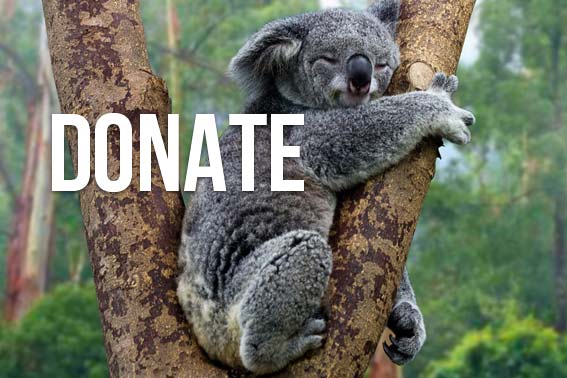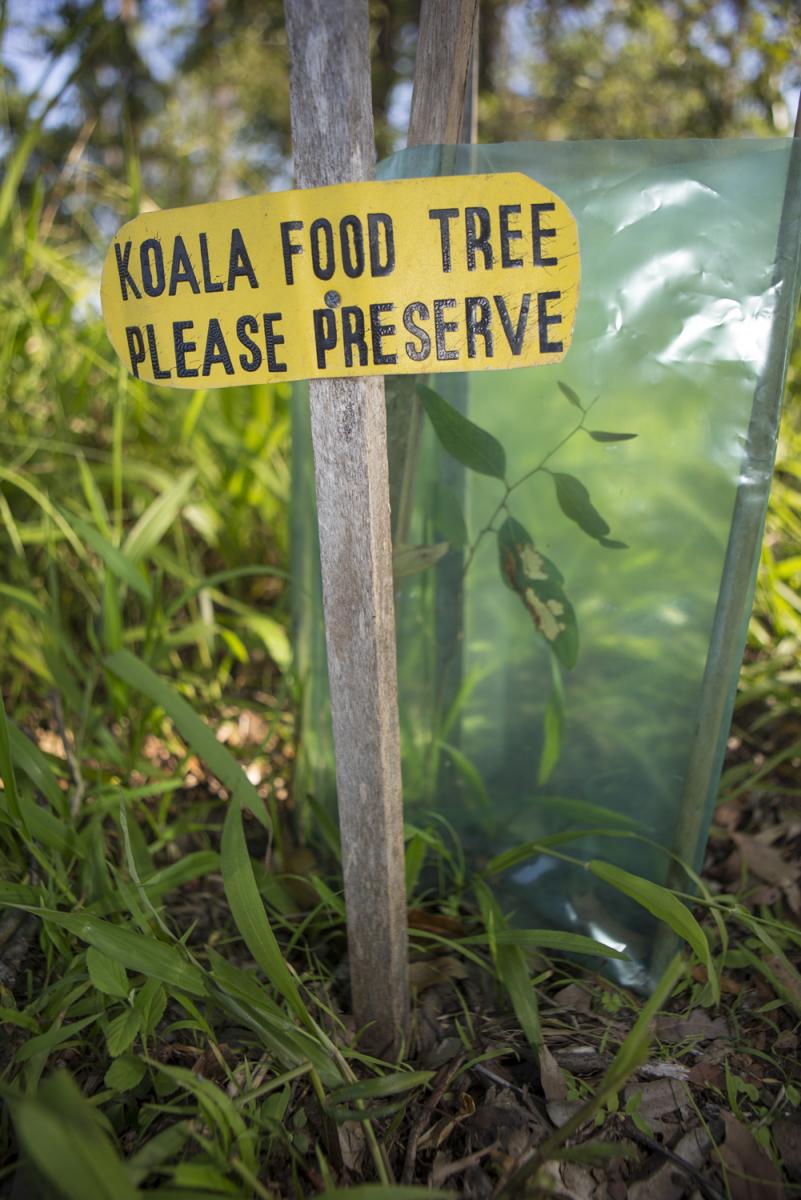The Australian Koala Foundation is proud to release an updated version of our National Koala Tree Planting List.
Rather than publish the full Koala Tree list, we have decided to make things easier for those simply wanting to plant trees for Koalas. Our researchers have analysed our extensive Koala Tree Species preferences database, and selected the most appropriate trees for planting on a region-by-region basis. If you want to plant trees to help save the Koala, simply find the species for your Local Government Area, and head down to your local Garden Centre or Tree Supplier. You may also be able to source plants through programs such as Land for Wildlife, or your Local Council.
This list is not sufficient to determine a development application,
a full list is available at akf@savethekoala.com for a fee.
500 – 1000 hectares $250 + GST
1,000 – 10,000 hectares $500 + GST
Whole local government area $1,000 + GST
Donate
Donate here to support AKF’s work in making these publications and research available to the public.
Your help is very much appreciated!
ABOUT THE TREE LIST
Utilising a combination of AKF’s tree database (with over 100,000 individual trees from 2000 sites), published research, and collaboration from several independent Koala researchers, the list covers everywhere that Koalas live and takes into account 273 Local Government Areas (LGAs) across 4 States.
The list is comprised of endemic (local) species in each LGA and identifies 88 tree species across NSW, SA, VIC & QLD which are the limiting resource (i.e. food) for Koalas in any particular area and are key to ensuring the future survival of this much loved Australian icon.
- There are three basic parameters we can use to define where Koalas can live in a sustainable manner.
- Areas where annual rainfall is above 500mm per year (except Murray & Darling Rivers)
- Less than 1000m above sea level
- Areas where the maximum daily temperature does not exceed 40 degrees C for more than a few days (this can result in significant physiological stress which can lead to Koala fatalities)
Research has shown that Koalas change their preferences seasonally throughout the year. It is therefore important that Koalas have a range of tree species to choose from that reflect seasonal changes and prevent them from having to travel to find species elsewhere and exposing them to other dangers (such as roads, dogs etc). With climate change continuing to be a threat to the survival of the Koala, non-endemic species from slightly warmer climates could also be considered as a longer-term option for planting.
It is crucial to plant trees in suitable soils with the right amount of drainage. If a tree is growing in a less than ideal location it will suffer moisture and nutrient stress, and produce chemicals (terpenes, phenols) that discourage Koalas from eating them. For example, Koalas favour E. tereticornis when it grows on flats with heavier alluvial soils and good moisture availability, but won’t enjoy it in on slopes where nutrients aren’t as readily available.
The AKF recommends planting trees next to remnant trees to augment habitat. Where there are remnant trees along watercourses (E.camaldulensis, E. tereticornis), habitat can be augmented by planting box species in slightly drier areas. AKF’s landscape ecologist David Mitchell says “The best advice is to get to know what species are in the area, and pick trees to plant from AKF’s list that already are there, or in similar locations. In particular, look to plant primary food species which we have identified on the list. These species are very attractive to Koalas, and if you plant other food tree species next to them Koalas will enjoy the trees you plant all the more.”
GENERAL INFORMATION ABOUT TREES AND KOALAS
The Koala Phascolarctos cinereus is an animal which feeds primarily, but not exclusively, on the genus Eucalyptus. Throughout their range in eastern Australia, Koalas have been recorded as using a wide variety of eucalypt species. This information can be misleading because it portrays Koalas not as the ecological specialists they are, but as opportunistic feeders who drift aimlessly across the landscape munching on “gum leaves”. In reality, this is not the case and within a particular area, only a few species of eucalypt will be preferentially used by Koalas. Such species, where they occur, are vitally important to the distribution, abundance and well being of contemporary Koala populations.
A variety of other trees, including many non-eucalypts, are also used by Koalas for feeding and shelter, or other behavioural purposes. On their own, however, these trees are not capable of sustaining Koalas long term. They are used primarily because they are growing in association with or in close proximity to the key tree species. Differing soil landscapes, water availability and other edaphic variables are also considered to influence the suitability of several important browse species.
In a socially stable breeding aggregation of Koalas, individual animals coexist in a matrix of overlapping home range areas. Within each animal’s home range area are a relatively small number of trees that are visited repeatedly, some of which are shared with other animals in the population. Such trees can be described as “home range” trees and are very important because they enable a population to maintain social cohesion.
The home range areas required by Koalas also vary in response to social factors and habitat quality, the latter measurable in terms of the density of preferentially used tree species. The sex of the animal is also important, with male Koalas tending to occupy larger home range areas of lower quality habitat than females. While this may be explained by the significantly larger body size of male Koalas, it is also typical of a polygynous social structure – a society in which a male mates with a number of females – where the home ranges of dominant, breeding males will overlap those of several adult females. The strong female bias in the breeding aggregations is offset by a higher rate of mortality in males, at least partly associated with stress from competition (with dominant males) for access to females.
In such stable breeding aggregations, Koalas can retain the same home range areas for many years. Evidence from the records of local Koala welfare groups suggests that, in the absence of undue disturbance, Koalas are likely to maintain their home range areas throughout their lives.
The relatively sedentary and localised movements of Koalas in a socially stable breeding aggregation are in stark contrast to the movements of dispersing Koalas of both sexes (those leaving their maternal home range to establish a home range of their own) and other transient members of Koala society. These animals are capable of extensive movements, often in excess of 40-50km over periods of a few weeks to several months.
Breeding activity on the part of the mother usually initiates the dispersal phase of the young from her previous breeding season. The movements and survivorship of these dispersing animals are significant because they contribute to maintaining recruitment levels and genetic vigour in breeding aggregations that are separate from one another. Indeed, it is not so much the presence of preferred food trees that influences the movements of these animals as it is their need to be with other Koalas. In this regard, established aggregations attract dispersing animals from other aggregations.
Work is continuing on the AKF’s Koala Habitat Atlas (KHA) Project which identifies and maps Koala habitat on the basis of the determined key species of Koala use trees for each specific area. KHA’s have been completed or are underway for a number of Local Government Areas in NSW, QLD and Victoria and eventually we aim for all areas of Koala habitat in Australia to be covered.
Koala Habitat Atlas studies have been undertaken in portions of the following areas and the most preferred species are listed. This project aims to identify any potential Koala habitat in Australia that as yet, does not have a Koala Habitat Atlas project. As with all mapping, it is subject to refinement as land is cleared or trees grow. The landscape continually changes.
The work being undertaken by the Australian Koala Foundation with its Koala Habitat Atlas Project is looking very closely at tree use by Koalas in specific areas and is confirming that tree species preferences often vary on a local or regional basis.
The tree list incorporates the most significant Koala use trees from the areas investigated by the AKF to date as well as drawing upon other published species lists.
|
|




